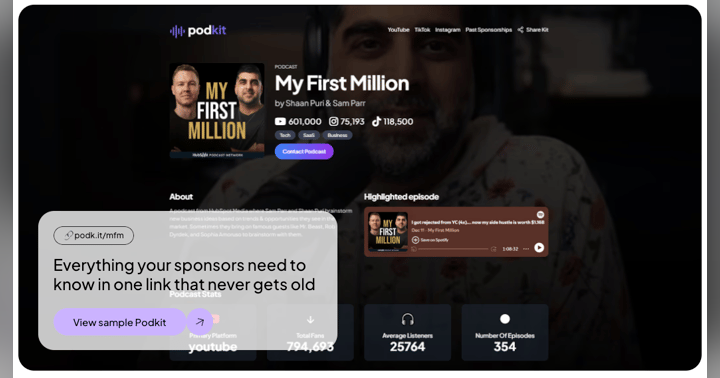Imagine your inbox is flooded with dozens of brands who want to partner with you. Some are requesting to do a tech integration, others want to swap guest blog posts, and even more would like to cross-collaborate in some kind of way.
This has happened to me and it’s terrifying.
As a backstory, I first began working in partner marketing for a well-known retail electricity company back in Houston in 2012. I was new to the role and was essentially told to just figure it out.
Two years later, I had increased the number of successful partnerships from three to 21, grew residential enrollments from 4,000 a year to 25,000, and turned this channel into one of the highest performing sales channels for the company. I loved it!
Flash forward ten years later and I’m now doing Partnership Marketing in some capacity for Saas companies. In 2021 I had joined Bonjoro and my responsibility was to develop a partnership channel. My first step was to leverage our current pool of customers and affiliates – how could we turn more customers into affiliates. Then I turned my attention to our product (tech) partners and figure out which partners would it makes sense to do an integration with. Finally, I found influencers and brands who had the same ICP as ours that we could sync up and perform co-marketing activities with.
One year later, we had achieved:
- 20+ co-webinars with influencers/complimentary brands that drove new users and awareness
- 5 new integrations and improvements on existing integrations that increased signups and revenue
- Increased our affiliate conversion rate from 4.5% to 9%
Looking back, I learned we could have had even more success if we didn’t waste time working with the partners that drove little value.
5 tips on how to find new Partnerships
- Use Crossbeam to identify which companies are selling to personas that are similar to the ones you sell to. Crossbeam is like LinkedIn for partnerships. In just a few clicks, you can find and connect with companies that have overlapping customers, leads, and opportunities.
Crossbeam was a huge time saver for me. Anytime a company reached out and wanted to partner with us, I invited them to join Crossbeam, connect their data, and map our accounts. If we found out that we had a small or little overlap in customer accounts, then there was no reason to go any further. Best part, you can use Crossbeam’s free version to do this!
2. Research other presenters who are speaking at events where you’re speaking. For example, AWeber hosted a week-long event that consisted of a week-long marketing series for business owners, side hustlers, and entrepreneurs. I was curious to find out what SocialBee did and reached out to Roxana Motoc who was also presenting at the event.
During our 15-minute zoom chat, we decided to see if we targeted the same customer personas and used Crossbeam to analyze our customer account overlaps. It turned out that we had a good overlap. So, we decided to do a co-webinar together which turned out great as more than 400 people registered (from both lists). The new Bonjoro customers generated from this event was one of the best cohorts we saw in Q1 of 2022!
3. Survey your customers. To find out what tech integrations we should put on the roadmap, we sent a survey to our customer base and simply asked – what company would you like us to integrate with?
We also asked what other tools and applications they use for their business. One of the popular tools that many Bonjoro customers use is Canva. So, although it didn’t make sense for us to do an integration with Canva, I did find an influencer who often talked about Canva.
When I reached out to her, I asked if she’d want to share her knowledge about Canva and content distribution with a large audience for free. In return, I asked if she would be open to having me on her show where I could present and talk about Bonjoro to her audience.
She happily accepted and this turned out to be one of the best relationships partnerships we ever formed 🙂
4. Competitor research. If you have a competitor that already has a fully fledged partnership program, chances are they have a page or portal detailing these partners.
An example is Hubspot’s partner portal. By reviewing their list of partners, you should be able to create a list of ideal partners that you can reach out to.
5. Run a query against your CRM data and pull out any email domains that don't match your customers email domains. This indicates a 3rd party managing their account, perhaps a consultant or an outside IT org that might be a good fit as a partner. 😉
The benefits of working with such a 3rd party is that
- They know the product (This means less sales training potentially)
- They trust the product
**Bonus**
The Google expert method
Use Google to find potential partners. For example, if you are an eCommerce brand and want to find potential partners, you can do a search for “eCommerce business consultant”, “eCommerce Shopify consultant”, or something similar.
Results will usually show a list of consultants, agencies and everything in between.
If you’re like Walter and want to start Partner Marketing activities but have no idea what you are doing or where to start, let’s talk. I’ll be here.
Eric Melchor
Founder of B2BPodPros











